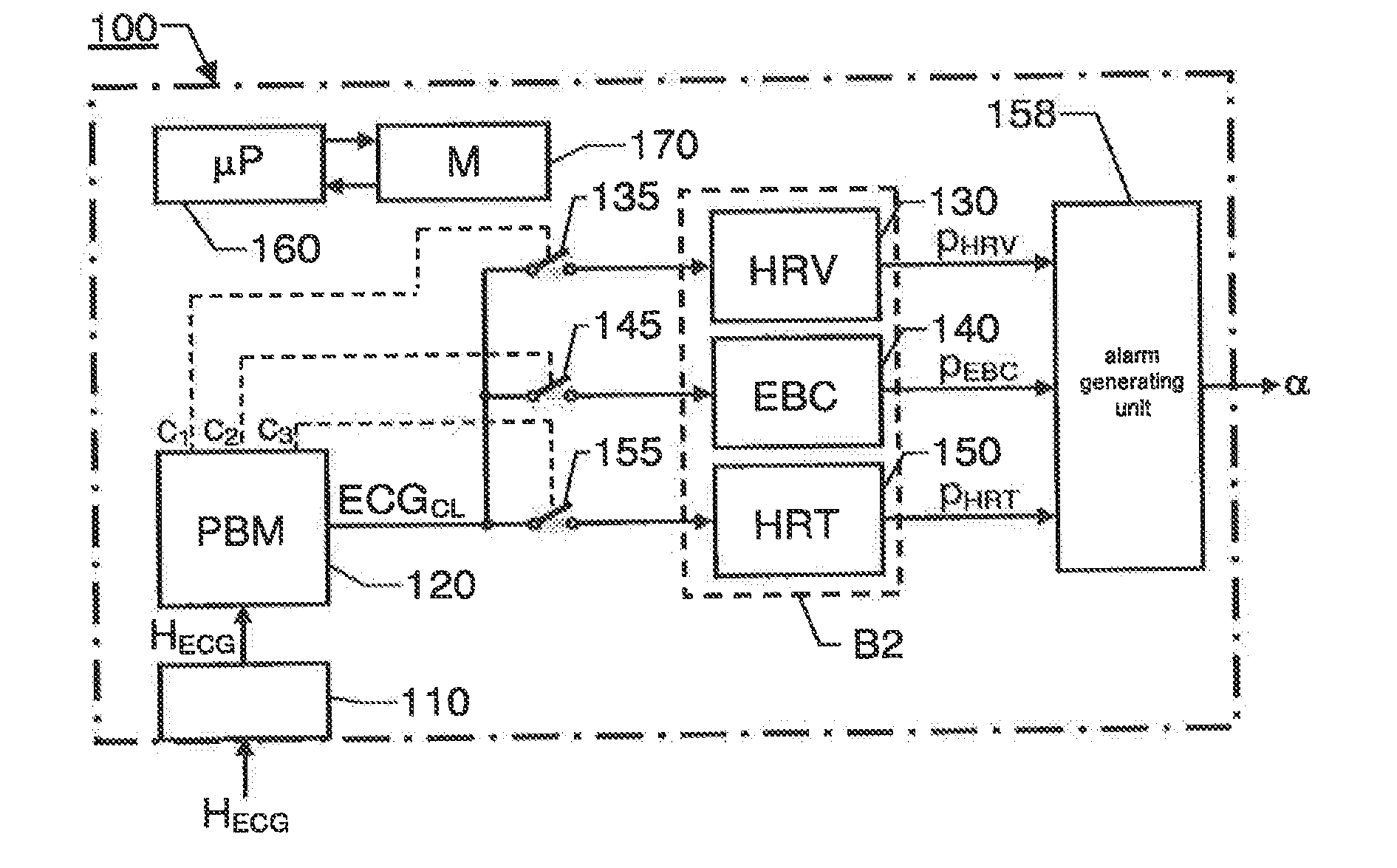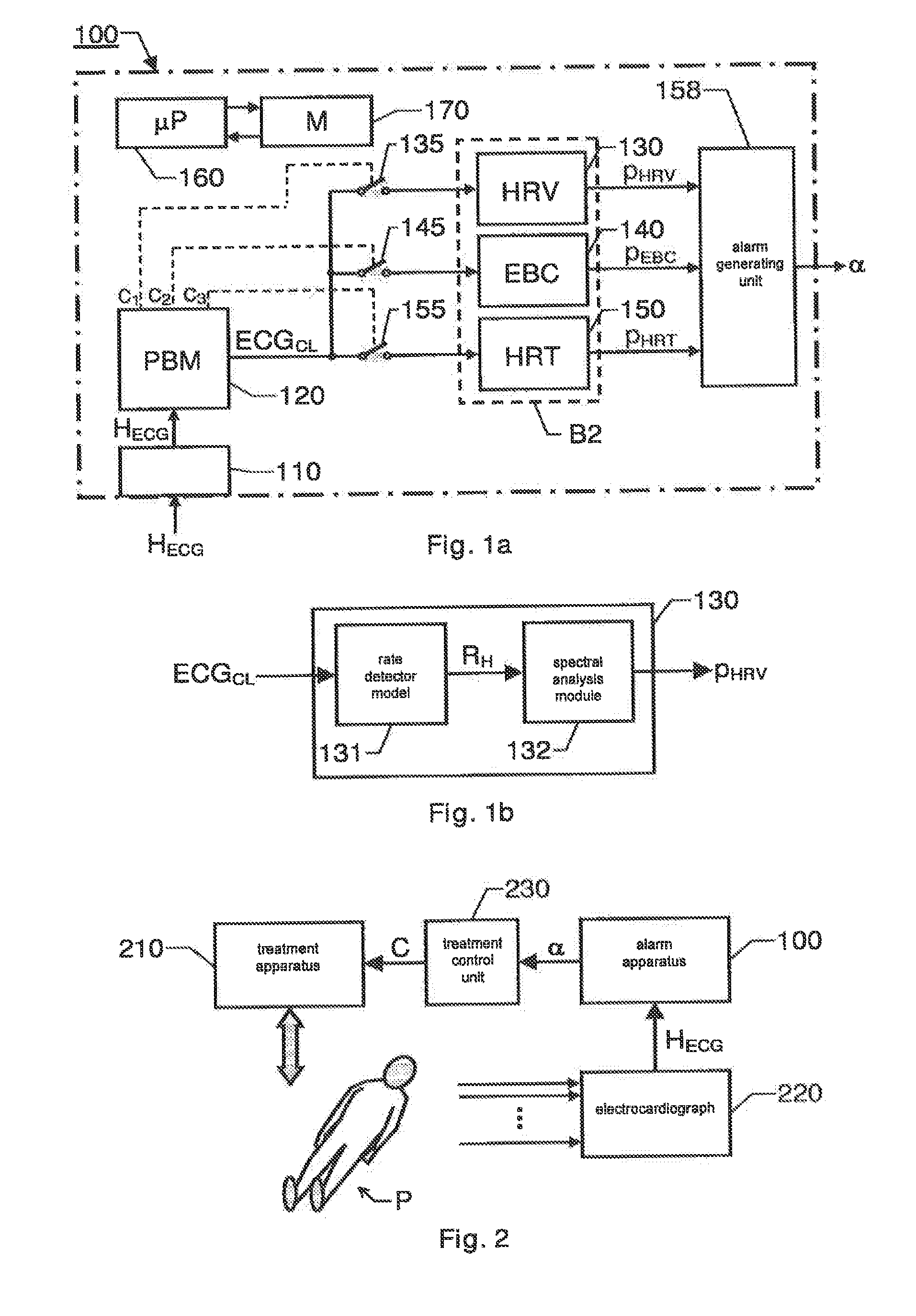Detection of drastic blood pressure changes
a blood pressure change and drastic technology, applied in the field of alarm devices, can solve the problems of unsatisfactory body provision, major problem of renal patients' disposal of surplus water, and not only strenuous for patients, and achieve the effect of rapid blood pressure reduction
- Summary
- Abstract
- Description
- Claims
- Application Information
AI Technical Summary
Benefits of technology
Problems solved by technology
Method used
Image
Examples
Embodiment Construction
[0047]FIG. 1 shows a block diagram over an alarm apparatus 100 for predicting a rapid blood pressure decrease in a patient undergoing extracorporeal blood treatment according to a first preferred embodiment of the invention.
[0048]The apparatus 100 includes an input interface 110, a primary beat morphology analysis unit 120, a bank of secondary analysis units B2 and an alarm-generating unit 158. Preferably, the apparatus 100 also includes a central processing unit 160 for controlling the operation of the other units, and a memory medium 170 storing a computer program which in turn is adapted to control the central processing unit 160.
[0049]The input interface 110 is adapted to receive a basic electrocardiogram signal HECG of the patient. For instance, the basic electrocardiogram signal HECG is a bandpass filtered, digitized signal which has been sampled at a rate of 1000 Hz and has an amplitude resolution of 0.6 μV. The electrocardiogram signal HECG is preferably registered by means ...
PUM
 Login to View More
Login to View More Abstract
Description
Claims
Application Information
 Login to View More
Login to View More - R&D
- Intellectual Property
- Life Sciences
- Materials
- Tech Scout
- Unparalleled Data Quality
- Higher Quality Content
- 60% Fewer Hallucinations
Browse by: Latest US Patents, China's latest patents, Technical Efficacy Thesaurus, Application Domain, Technology Topic, Popular Technical Reports.
© 2025 PatSnap. All rights reserved.Legal|Privacy policy|Modern Slavery Act Transparency Statement|Sitemap|About US| Contact US: help@patsnap.com



